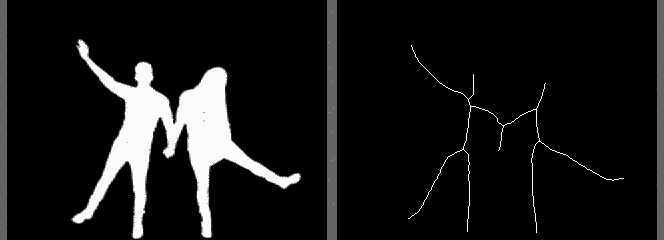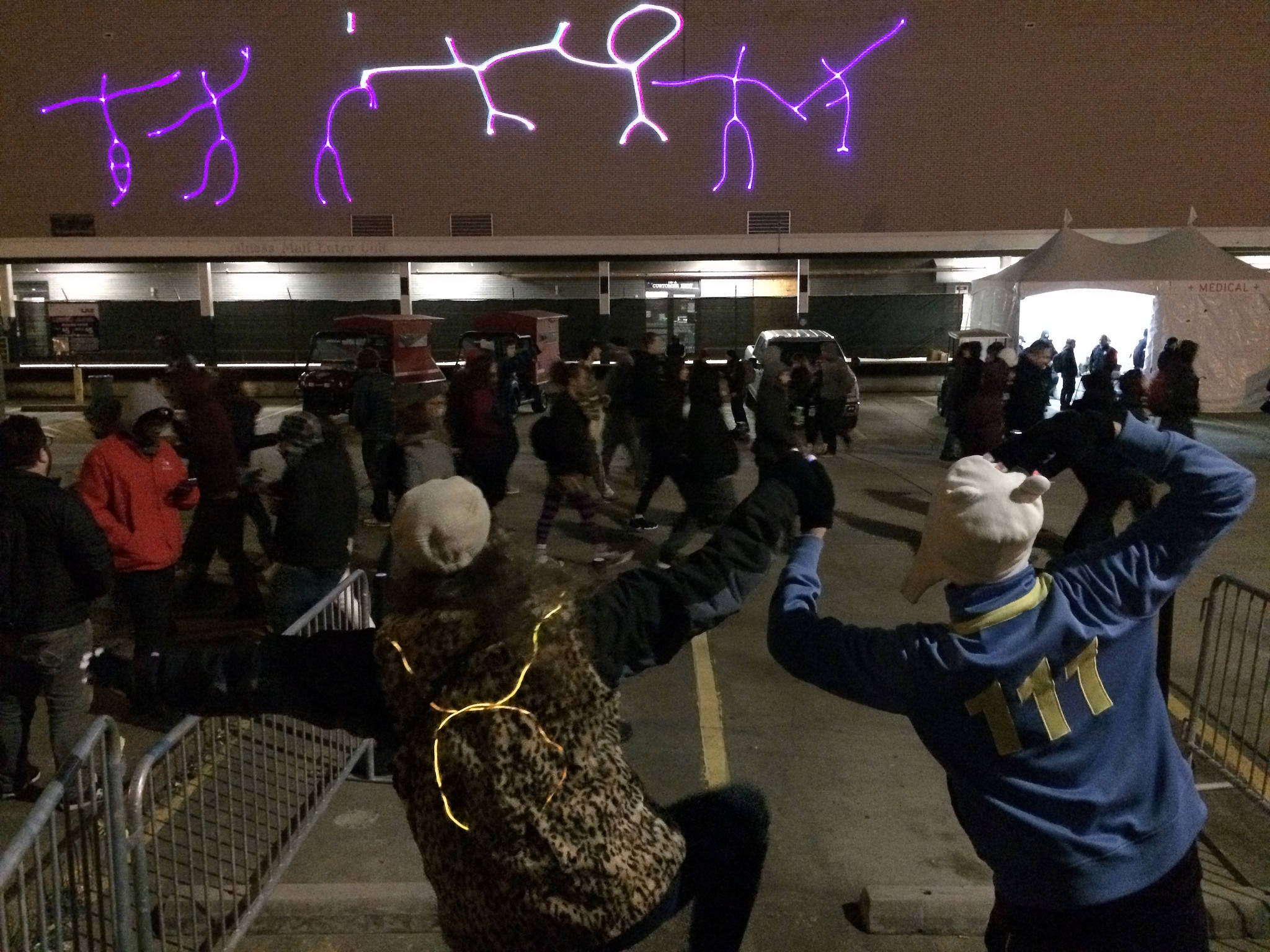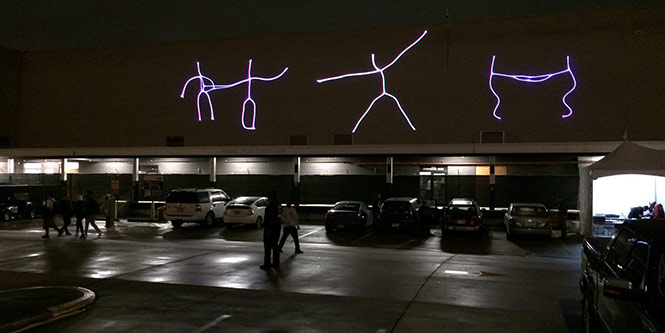Printed from www.flong.com
Contents © 2020 Golan Levin and Collaborators
Golan Levin and Collaborators
Projects
Sort by : Author | Date | Name | Type
- Installations
- Ghost Pole Propagator II
- Augmented Hand Series
- Eyeshine
- Re:FACE, Anchorage Version
- Merce's Isosurface
- Double-Taker (Snout)
- Opto-Isolator
- Eyecode
- Interstitial Fragment Processor
- Reface [Portrait Sequencer]
- Ghost Pole Propagator
- Footfalls
- Scrapple (Installation)
- The Manual Input Workstation
- Interactive Bar Tables
- Messa di Voce (Installation)
- Hidden Worlds of Noise and Voice
- Re:MARK
- Introspection Machine
- Audiovisual Environment Suite
- Dakadaka
- Rouen Revisited
- Performances
- Ursonography
- Scrapple (Performance)
- The Manual Input Sessions
- Messa di Voce (Performance)
- Dialtones (A Telesymphony)
- Scribble
- Net.Artworks
- Terrapattern
- Moon Drawings
- Free Universal Construction Kit
- QR Codes for Digital Nomads
- The Dumpster
- Axis
- JJ (Empathic Network Visualization)
- The Secret Lives of Numbers
- Alphabet Synthesis Machine
- Obzok
- Sketches
- Stria
- Dendron
- Slamps
- Banded Clock
- Floccus
- Stripe
- Meshy
- Directrix
- Yellowtail
- Streamer
- Blebs
- Self-Adherence (for Written Images)
- Poster design for Maeda lecture
- The Role of Relative Velocity
- Segmentation and Symptom
- Floccular Portraits
- Curatorial
- Mobile Art && Code
- ART AND CODE
- Code, Form, Space
- IEEE InfoVis 2008 Art Exhibition
- Solo exhibition at bitforms gallery
- IEEE InfoVis 2007 Art Exhibition
- Signal Operators
- Commercial / Industrial
- Motion Traces [A1 Corridor]
- Civic Exchange Prototype
- Amore Pacific Display
- Interactive Logographs
- Interval Projects
- Media Streams Icons
- Miscellaneous
- NeoLucida
- Rectified Flowers
- GML Experiments
- New Year Cards
- Admitulator
- Glharf (or Glarf)
- Finger Spies
Ghost Pole Propagator II
2016 | Golan Levin
Ghost Pole Propagator II revisits a 2007 interactive installation originally developed for video projection in the cellars of a 13th century castle. In this version, commissioned in December 2016 by the Houston Day for Night festival, the project has been reimagined at a significantly larger scale, and rendered with the perceptually remarkable light of laser beams.
Overview video, 1’54" [Vimeo • YouTube]
Stick figures are an extremely compact yet exceptionally expressive means of representing the human form. The graphic simplicity of such figures belies their emotional force. By eliminating unnecessary details and reducing visual elements to their absolute essence, stick figures accomplish a powerful, immediately apprehensible and possibly universal communication of human presence, attitude and gesture. Looking around, we find inspirational stick figures in ancient petroglyphs; in children’s drawings; and in the pioneering motion studies of the 19th century French chronophotographer, Étienne-Jules Marey.

An image processing technique called skeletonization (or the medial axis transform) can be used to generate stick figures from the silhouette of any shape. This algorithm is commonly employed in recognizing letters and numbers by some OCR (Optical Character Recognition) systems. However, it produces particularly engrossing abstractions when applied to the silhouettes of people. In the Ghost Pole Propagator installations, these stick figures are computed, in real-time, from the moving silhouettes of participants, visitors, and passers-by.

Ghost Pole Propagator (revised software test, 2016) from Golan Levin on Vimeo.
The animated "skeletons" produced by this technique preserve all of the gestural qualities of a visitor’s movements and gait, while simultaneously abstracting their appearance into a proto-symbolic, timeless, and poignant petroglyphic character. The result is a universal communication of presence, attitude and gesture.
In the Ghost Pole Propagator II installation, these vector-based characters are drawn at gargantuan scale using a computer-controlled laser, which allows for a significantly larger display than a conventional video projector. Producing an impossibly crisp and chromatically pure line, the unique visual quality of the laser display is ideally suited to rendering the sketchlike skeletons produced by the installation.
Golan Levin at Day for Night, December 2016 from Golan Levin on Vimeo.



By capturing and replaying the figures of the passersby in its environment, the installation produces a layered and dynamic tapestry that reflects the history and activity of its locale. The format of the work is variable; in other configurations, the project operates as a kind of "interpretive monitoring station" or "poetic surveillance system" for nearby pedestrian traffic.
Credits and Acknowledgements
Ghost Pole Propagator II was developed in openFrameworks, a free, open-source C++ programming toolkit for the arts, with technical contributions and on-site assistance from Dan Moore. The project uses Seb Lee-Delisle's ofxLaser openFrameworks addon, as well as Memo Akten's ofxEtherdream and ofxIlda addons, originally based on work by Daito Manabe and Yusuke Tomoto, for laser control with the Etherdream DAC. The project obtains very significant speedups through the use of the ofxLaserTSP addon, developed by Bryce Summers, for laser-specific path optimization with a directed Traveling Salesman Problem solver. Thanks to these artist-developers and the rest of the openFrameworks community for sharing the love.
Ghost Pole Propagator II was commissioned by the 2016 Day for Night festival, Houston, under the curatorial direction of Alex Czetwertynski. Additional support for this project came from the Frank-Ratchye STUDIO for Creative Inquiry at Carnegie Mellon University. Laser projection and management was provided by ILDA-certified laserist, Tim Walsh of Laser Spectacles, Inc. The project was documented by Claire Hentschker, Tom Hughes, and Houston Public Media.
Media
An archive of high-resolution images of Ghost Pole Propagator II can be found in this Flickr album.
